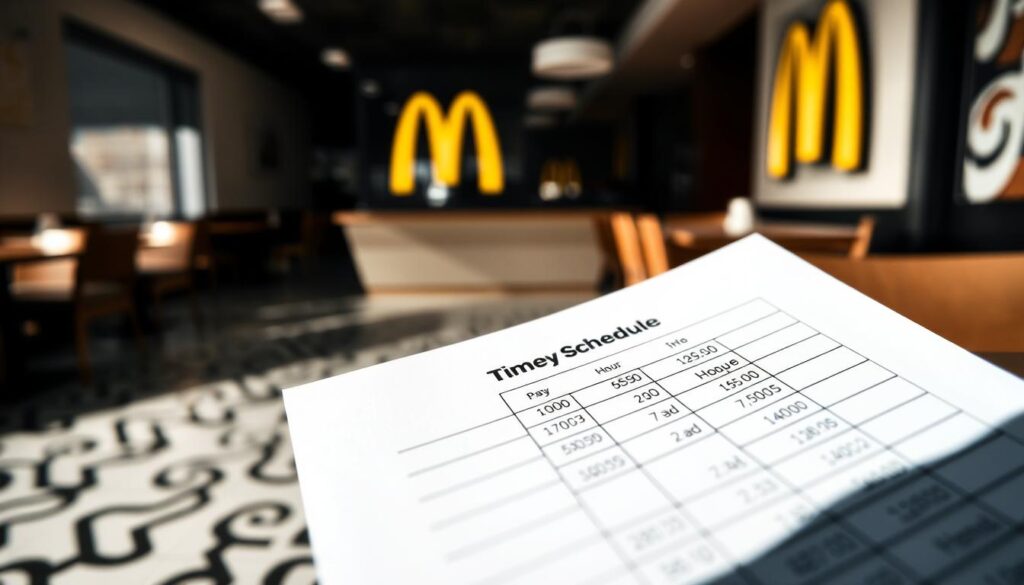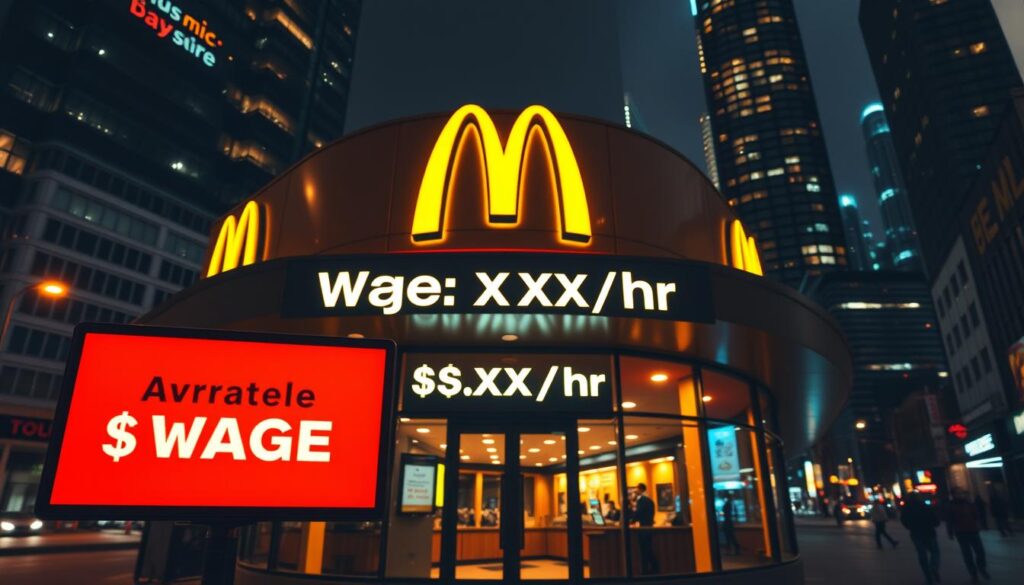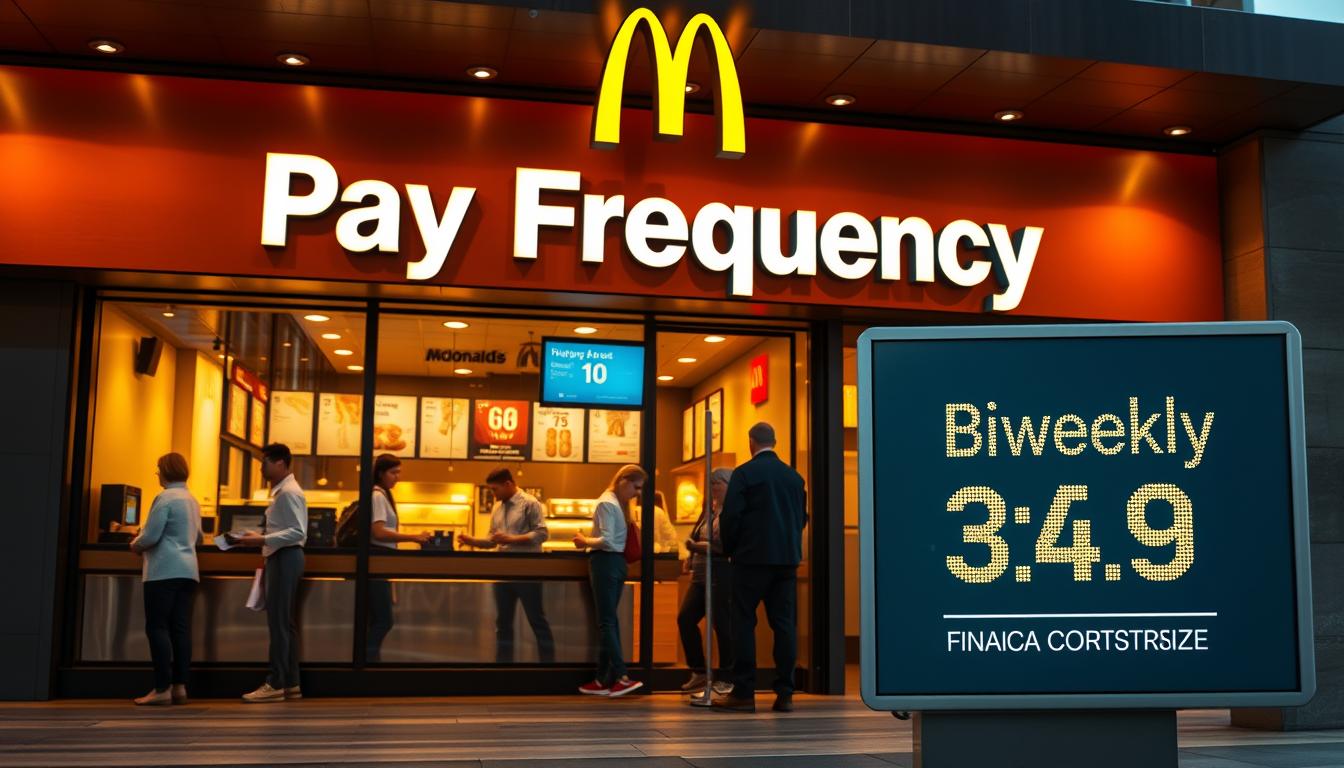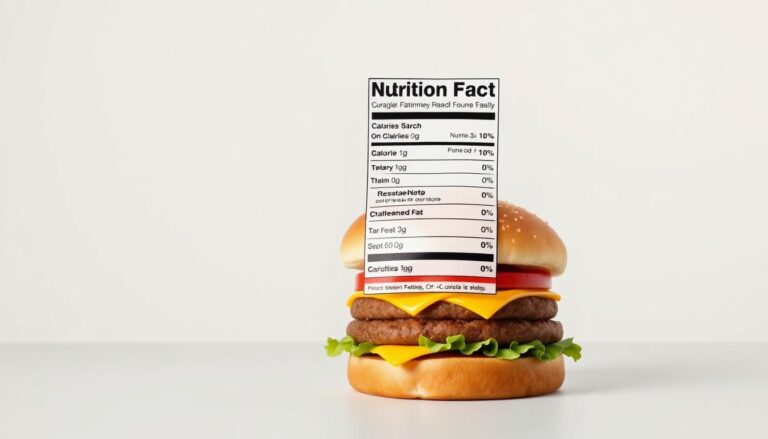Are you curious about when you’ll receive your wages from McDonald’s? As one of the largest employers in the fast-food industry, understanding the payment schedule is crucial for managing your personal finances effectively.
The frequency of pay can vary depending on the location and type of employment, whether it’s a corporate or franchise restaurant.
As a current or prospective employee, it’s essential to know that McDonald’s payment schedules differ across its global network of restaurants. In this article, we’ll explore the various payment frequencies, methods, and wage structures to provide clarity on McDonald’s pay practices.
McDonald’s Payment Schedule Overview
McDonald’s payment schedules can vary significantly based on several factors, including the type of employment, location, and local labor laws. As an employee, understanding your pay schedule is crucial for managing your finances effectively.

McDonald’s employs various payment schedules across its locations worldwide. The most common payment frequencies include weekly, bi-weekly, and monthly payments.
Understanding McDonald’s Payment Policies
McDonald’s payment policies are influenced by local labor laws and regulations. For instance, some countries or states may require weekly payments, while others may allow bi-weekly or monthly payments. According to a statement from McDonald’s, “Our payment policies are designed to comply with local laws and regulations while ensuring timely and fair compensation to our employees.”
The type of employment also plays a significant role in determining the payment frequency. For example, hourly employees may be paid more frequently than salaried employees. As McDonald’s continues to operate globally, it adapts its payment policies to accommodate different financial systems and employee preferences.
Factors Affecting Payment Frequency
Several factors can affect how often McDonald’s employees are paid. These include:
- The type of employment (hourly vs. salaried, part-time vs. full-time)
- Local labor laws and regulations
- Regional economic factors and banking systems
- Whether the McDonald’s location is corporate-owned or franchise-owned
It’s essential for prospective employees to inquire about the payment schedule during the hiring process to understand when they can expect to receive their wages.
As McDonald’s continues to evolve its employment practices, understanding the payment schedule becomes increasingly important for employees to manage their financial planning effectively.
Does McDonald’s Pay Weekly or Bi-Weekly?
The payment schedule at McDonald’s can differ based on several factors, including location and employment type. As an employee, understanding when you can expect to be paid is crucial for managing your finances effectively.
Weekly Payment Practices
Some McDonald’s locations pay their employees on a weekly basis. This practice is more common in certain regions or for specific types of employment. Weekly payments can help employees with weekly expenses, providing a consistent cash flow.
For instance, employees working in high-demand areas or during peak seasons might receive their wages weekly. This frequency can be beneficial for those who need to manage their finances on a tight schedule.
Bi-Weekly Payment Structure
More commonly, McDonald’s pays its employees bi-weekly. This means that employees receive their wages every other week, typically on a specific day designated by the management.
The bi-weekly payment structure is widely adopted across various McDonald’s locations. It allows for a balance between providing employees with regular income and managing the company’s payroll processing.

Monthly Payment Options
In certain regions or for salaried positions, employees might receive their pay on a monthly basis. This is less common for hourly workers but is practiced in some international markets or for management roles.
For example, some McDonald’s locations in Europe or Asia might adopt monthly payment schedules due to local labor laws or regulations. Salaried employees, such as those in management positions, are more likely to be paid monthly.
| Payment Frequency | Typical Employees | Regions |
|---|---|---|
| Weekly | Hourly workers in high-demand areas | Various, depending on local practices |
| Bi-Weekly | Most hourly workers | Common across many regions |
| Monthly | Salaried employees, management | More common in certain international markets |
Understanding these payment structures can help you manage your expectations and financial planning if you’re employed by McDonald’s.
McDonald’s Payment Methods and Processes
The payment processes at McDonald’s reflect the company’s effort to provide flexibility and convenience to its employees. Over the years, McDonald’s has evolved its payment methods to keep pace with technological advancements and changing employee preferences.
Direct Deposit Options
One of the primary payment methods offered by McDonald’s is direct deposit. This option allows employees to receive their wages directly into their bank accounts, eliminating the need to physically cash checks. Direct deposit is not only convenient but also reduces the risk of lost or stolen checks. In fact, many employees prefer this method as it provides immediate access to their earnings on payday.
To set up direct deposit, employees typically need to provide their bank account information to the payroll department. This process is usually straightforward and can be completed during the onboarding process or at a later time as needed.
Pay Cards for McDonald’s Employees
For employees who may not have a traditional bank account, McDonald’s offers pay cards as an alternative payment method. Pay cards function similarly to debit cards, allowing employees to access their wages at ATMs or make purchases directly. This option is particularly useful for people who prefer not to use traditional banking services or who need immediate access to their funds.

Paper Checks and Other Payment Methods
Although less common, some McDonald’s locations may still issue paper checks to employees. The use of paper checks is generally limited to specific circumstances, such as technical issues with direct deposit or in locations where electronic payment systems are not available. Employees who receive paper checks need to verify the information on the check, including their name, pay period, and the amount paid, before cashing it at a bank or designated check-cashing facility.
| Payment Method | Convenience Level | Accessibility |
|---|---|---|
| Direct Deposit | High | Immediate access to funds on payday |
| Pay Cards | Medium | Accessible at ATMs and for purchases |
| Paper Checks | Low | Requires physical cashing or deposit |
In conclusion, McDonald’s offers a variety of payment methods to cater to the diverse needs of its crew members. While the industry trend is moving towards electronic payments, the company still accommodates those who may prefer or require alternative methods. As the industry continues to evolve, it is likely that McDonald’s will continue to adapt its payment processes to better serve its employees.
McDonald’s Wages and Compensation Structure
Understanding McDonald’s wages requires a look into several key factors, including the starting pay, differences in pay based on position, and how regional variations impact compensation.
Starting Pay at McDonald’s
The starting pay at McDonald’s can vary significantly based on location, with the minimum wage being a significant determinant. In areas with a higher cost of living, such as California, the starting wage tends to be higher. For instance, in some regions, McDonald’s employees might start at or slightly above the local minimum wage, which can be higher than the federal minimum wage. As of the current year, employees can expect a competitive starting wage that reflects local economic conditions. McDonald’s starting pay is designed to attract new crew members while adhering to local wage laws.

Pay Differences by Position
Not all positions at McDonald’s are compensated equally. Crew members in different roles can have varying wages based on their responsibilities, experience, and the level of skill required for their position. For example, management positions or those requiring specialized skills typically receive higher compensation compared to entry-level crew member positions. The average hourly wage for McDonald’s employees can thus vary significantly depending on the specific job role and the individual’s experience.
Regional Variations in McDonald’s Pay
Regional variations play a crucial role in determining McDonald’s pay. States with a higher minimum wage, such as California or New York, tend to have higher wages for McDonald’s employees compared to states with lower minimum wages. The cost of living in different regions also influences wage decisions, as McDonald’s aims to offer wages that are competitive within the local labor market. As a result, employees in high-cost areas may receive higher wages to reflect the local economic conditions. Understanding these regional variations is key to grasping the overall compensation structure at McDonald’s.
Conclusion
In conclusion, McDonald’s payment policies play a significant role in the overall employment package. As you’ve learned, McDonald’s primarily uses a bi-weekly payment system, but payment frequency can vary depending on your location and position.
You now know that McDonald’s offers various payment methods, including direct deposit, pay cards, and in some cases, paper checks. Understanding these options can help you manage your finances effectively. The wage structure at McDonald’s also varies, with differences in starting pay, position-based pay, and regional variations.
It’s essential to check with your specific McDonald’s location about their payment practices during the application process, as franchise-owned restaurants may have different policies than corporate locations. By understanding McDonald’s payment practices and how they compare to industry standards, you can make informed decisions about your employment.
To manage your finances effectively, consider the payment schedule and methods when planning your budget. As you move forward, stay informed about any changes to McDonald’s payment policies that may affect you.







